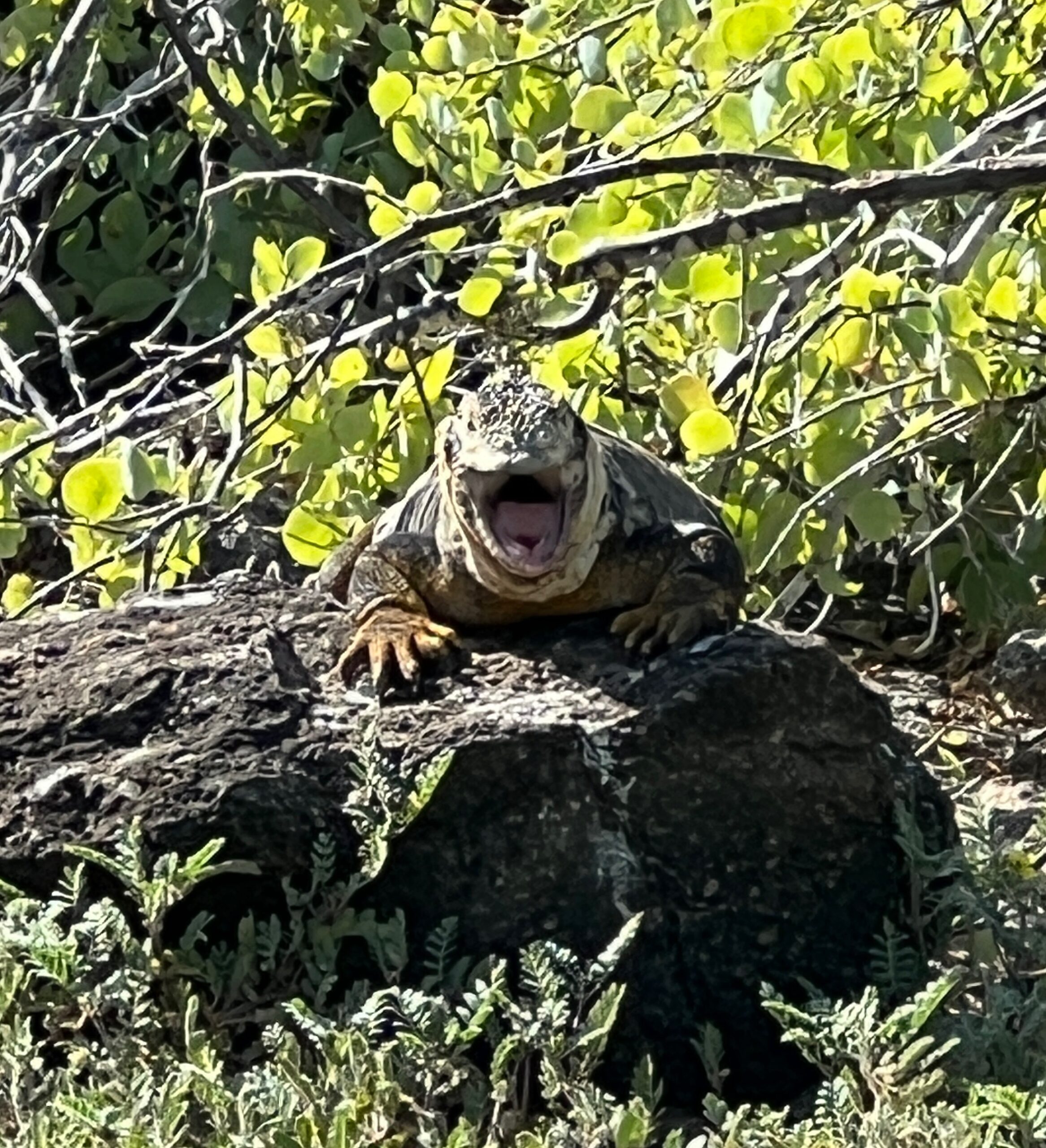Plaza Norte and Plaza Sur are two small islands off the coast of Santa Cruz. They are very small, Plaza Sur is only 435 feet across and you can see from one end to the other, but it hosts a large population of land iguanas, lava lizards and the ubiquitous sea lions. It is also home to shearwaters and the swallowtail gull with their red eye ring, and their hungry chicks. Upon landing there was a pillar with the inscription: Republica de Ecuador, Galapagos Parque Nacional in Spanish and English being guarded by a swallowtail gull.
We visited Galapagos at the end of the rainy season, so the island was lush with saltbush, red susuvium or carpetweed, and the goat’s head plant was in full yellow flower. The opuntia cactus, a prickly pear species, grows tall on this small island and is the main source of nutrition for the iguana in the dry season. Our naturalist guide, Jose Luis, explained it like this; in the dry season when the cactus is the only food for the iguanas he likened it to us eating a steady diet of broccoli. Nutritious, and it’ll keep us alive, but not very exciting. When the carpetweed and goat’s head plant is in bloom it’s like eating at the Cheesecake Factory. And we did see the iguanas having a big time of it munching on the tasty yellow flowers.
Unfortunately the opuntia cactus saw a huge decline on Plaza Sur. Harsh El Nino conditions made it so the only food available to the iguana was the cactus, and it was almost wiped out. A reforestation project is underway, and while the wire cylinders are unsightly it’s the only way to keep the iguana from eating the young opuntia cactus. They grow very slowly, so the young plants must be protected for the repopulation to succeed. The naturalists are hoping the impending El Nino is not severe, as it causes losses of seabirds, marine iguana, and sea lions, and the knock on effect is the loss of the things they eat.
We saw a male iguana chase a smaller male from his territory, and I was surprised by how fast they move. Too fast for me to grab a video! Iguanas make NO SOUND. They communicate with head motions, and watching the older male we knew he meant business. Ah, nature…
Next up – Santa Cruz, Charles Darwin Station and the Giant Tortoise Breeding Center



Leave A Comment